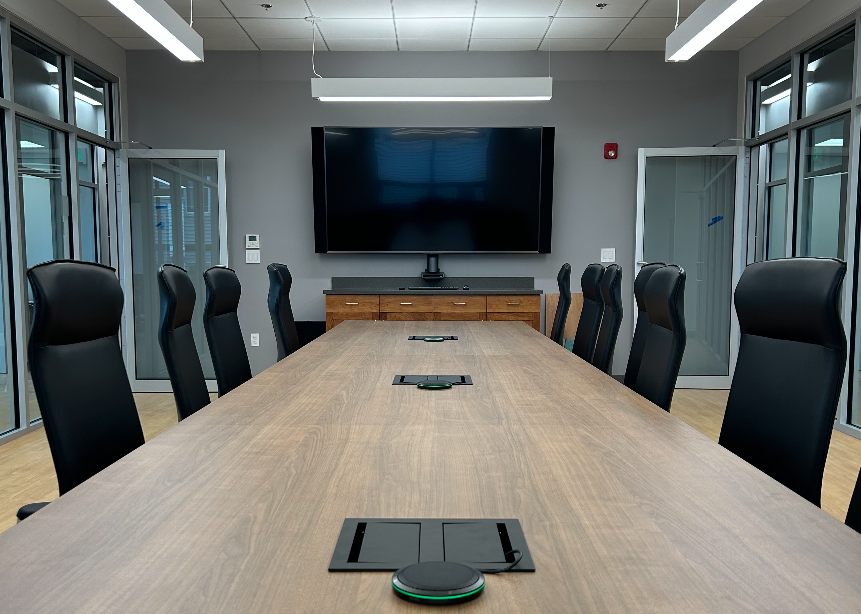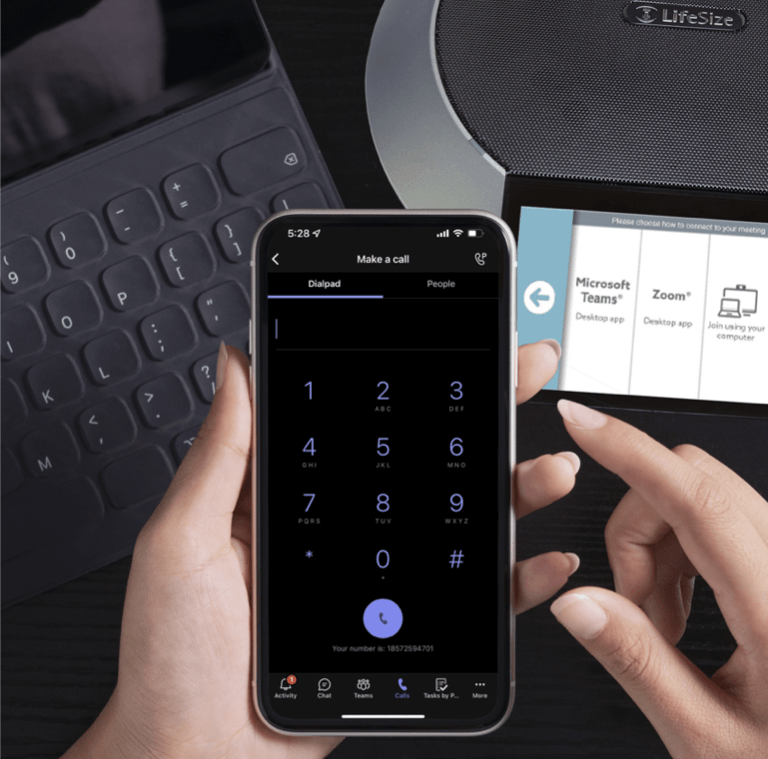Call Us Now!
Call Us Now!
CoreNexa Video
Now included with every LPS Connect extension
CoreNexa video is now available at no charge with every LPS Connect extension. This offers you the opportunity to use video whenever it is optimal to interact with employees, customers or suppliers. This can be done without adding additional licenses or incurring incremental costs. It supports video as being more conversational rather than just being associated with a meeting. Video calls can be made 1 : 1 (one to one) or virtual rooms can be established where employees, customers, or suppliers can just drop into your personal meeting rooms.
Background
"Like so many technologies, the concept of video communication and video conferencing was way ahead of the technology of its day. Soon after the telephone was invented in the late 1800s people were dissatisfied with just hearing the other party -- they also wanted to see the other party.
It was a long trip from the first video call to Zoom meetings with a dozen people -- and many steps between. AT&T and Bell Labs led the way toward video calls since they provided the only means of telecommunication for decades. Video conferencing has grown from person-to-person communication with black and white still images to multi-party transmissions with 4k resolution in real-time. The history that led us to Zoom, Teams, Skype and Webex is long and storied." Andy Patrizio - 17 Aug 2021 - Tech Target
New Paragraph
1960s
Video conferencing services have been evolving for several decades, with their roots tracing back to the 1960s. The first form of video conferencing can be attributed to the AT&T Picturephone, which was introduced at the 1964 New York World's Fair. This technology allowed people to see each other on video while talking on the phone, but it was expensive and did not become widely adopted.
1980s - 1990s
The real growth in video conferencing technology started in the 1980s and 1990s with the advancement of digital networking and compression technologies. This period saw the development of more practical and cost-effective commercial systems becoming more widely available in the late 1980s and early 1990s. Companies like PictureTel, Compression Labs, VTel, and others lead the way.
1990s - 2000s
The market and technology saw a significant expansion with the advent of the internet and broadband connectivity in the late 1990s and early 2000s. Video conferencing became more accessible to businesses and eventually to the general public. This stage was led by companies like Polycom, Lifesize, Tandberg, Cisco and others. Services like Skype, launched in 2003, brought free or low-cost video calling to consumers worldwide.
2010s - 2020s
The 2010s saw the introduction and growth of cloud-based video conferencing services, making it easier and more affordable for organizations of all sizes to implement video conferencing solutions. Platforms like Zoom, Microsoft Teams, Lifesize Cloud, Cisco WebEx, and Google Meet became household names, especially with the surge in remote work and digital communication trends accelerated by the COVID-19 pandemic starting in early 2020.
2020s On
With lockdowns and social distancing measures in place globally, organizations and educational institutions rapidly shifted to remote operations. Video conferencing became a crucial tool for maintaining productivity and continuity. Tools like Zoom, Microsoft Teams, and Google Meet saw exponential growth in users as they became the primary means for virtual meetings, classes, and social gatherings.
Moreover, the shift towards cloud-based solutions and remote access, evident across all major players, drove the demand for greater accessibility, flexibility and functionality. Cloud technology enabled easy access to video conferencing services from multiple devices and service providers, supporting the growing trend of remote work and collaboration across different geographic locations.
WebRTC - Harnessing the Power of the Browser and the Network
The introduction of WebRTC (Web Real-Time Communication) technology has been a major advancement in the way real-time communication occurs on the web. Unlike previous technologies, WebRTC allows for direct video, audio, and data communication between browsers and devices without the need for additional plugins or third-party software. This development has significantly benefited applications requiring real-time interaction, such as video conferencing, live streaming, and peer-to-peer file sharing, by simplifying the process and making it more accessible.
Looking forward, the anticipated next phase of evolution in video and real-time communication technologies is expected to come from the integration of WebRTC with various digital tools and platforms. This means that WebRTC could be more deeply embedded within productivity suites (like Microsoft Office or Google Workspace), social media platforms, and specialized tools specific to certain industries. The goal of these integrations is to offer users a more seamless and cohesive experience, allowing them to effortlessly transition between different tasks and types of communication without needing to switch applications or environments.
For example, integrating WebRTC with a productivity suite could enable users to start a video call directly within a document editing session, facilitating real-time collaboration. Similarly, social media platforms could use WebRTC integrations to enhance live streaming capabilities or enable direct, real-time communication between users without leaving the platform.
This evolution aims to create a more interconnected and user-friendly digital ecosystem, where the barriers between different services and types of communication are minimized, enhancing productivity and user engagement.
CoreNexa Video and WebRTC
LPS Connect's UCaaS offering, CoreNexa, incorporates WebRTC based video and collaboration as a component of its unified communications platform. LPS Connect supports voice communications, sophisticated call routing, SMS/MMS messaging, and now WebRTC based video and screen-sharing working in concert with Google and Microsoft contact and calendar integration. Voicemail, call history, and call and video recording round out it's total capabilities.
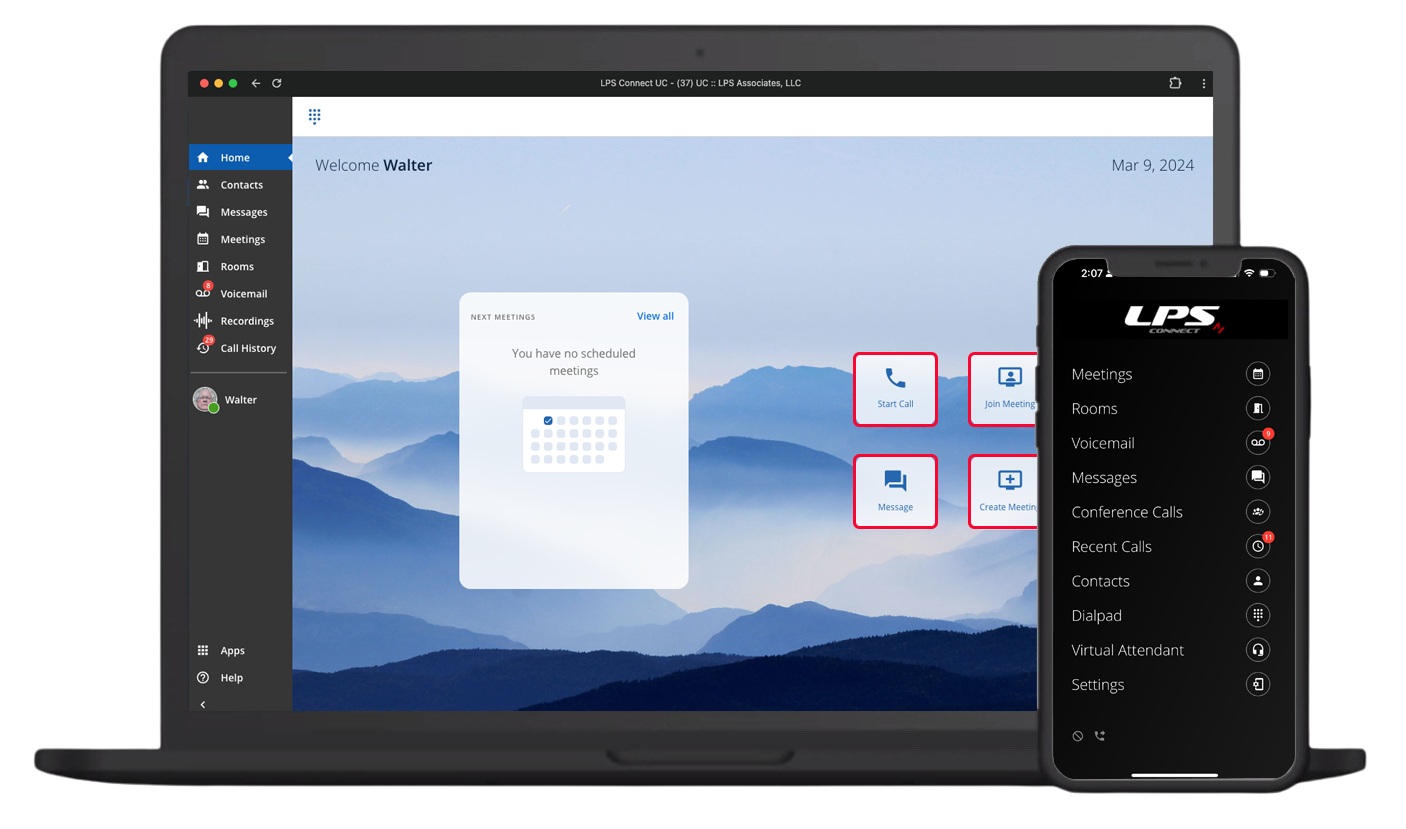
Private One-to-One Spontaneous Video via Community Contacts
CoreNexa video, functionally integrated with LPS Connect voice and messaging through a common user interface, is a great spontaneous video application for organizations that are using LPSConnect for their voice and messaging communications in concert with services such as Zoom, Microsoft Teams, Google Meet, and Cisco WebEx, among others for multi-participant video meetings. LPS Connect internal/Community users can easily connect to each other, 1 to 1, by clicking on the "Start a Meeting" prompt located within the contacts record as illustrated below. Once the call is established, both parties will connect in a new browser window after agreeing to join the session. They can then share information, exchange files, and record the session for archival purpose
CoreNexa video is offered free of charge. Video calls can be made as easy as a voice call or text message making CoreNexa the go-to solution for spontaneous or un-scheduled 1 to 1 video.
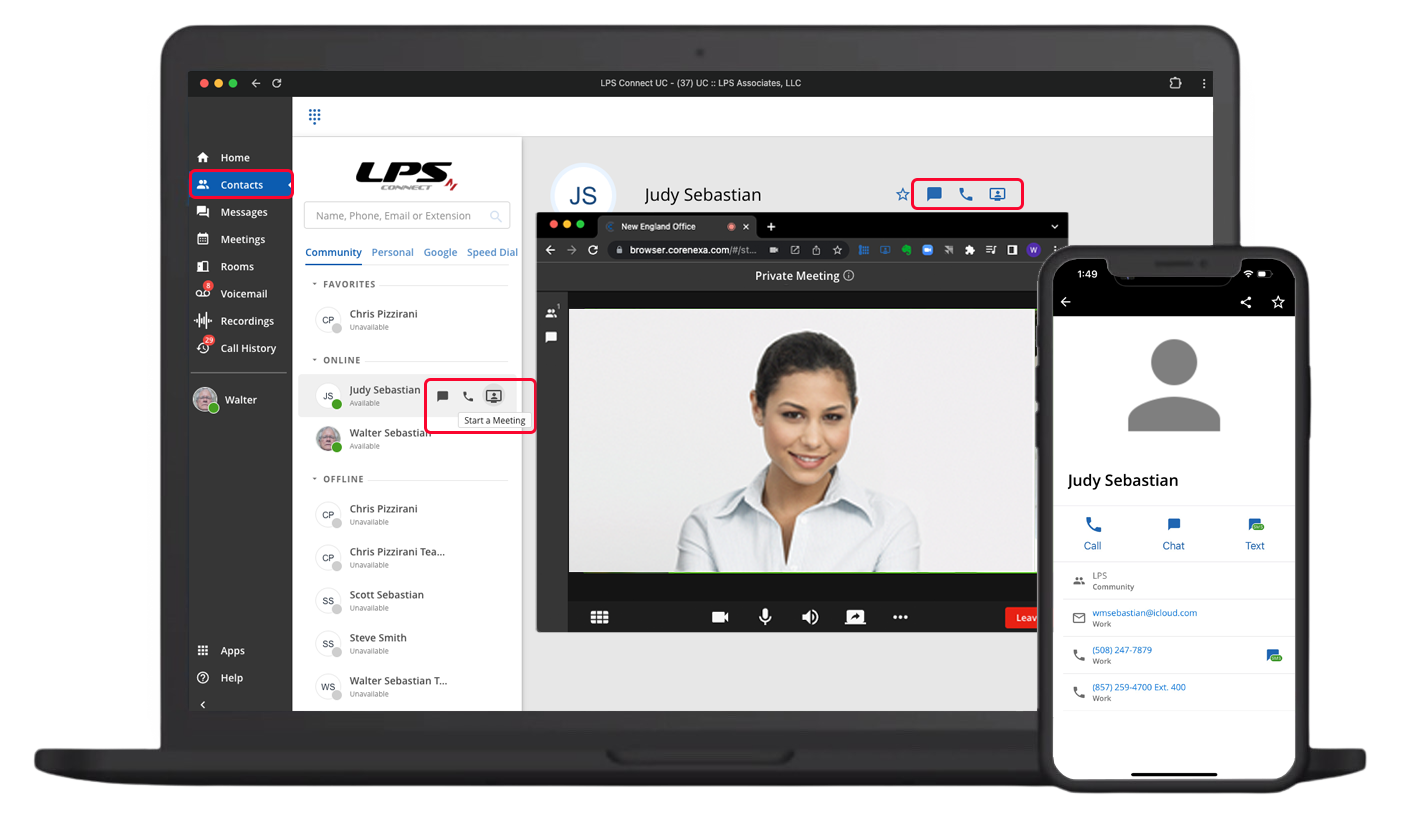
Inviting Meeting Participants
Participants outside of the Community/LPS Connect phone system can easily connect via a browser by using the meet.corenexa.com URL followed by a Meeting ID, Your Name, and PIN. There is no need to download any software making connections possible on ANY device and ANY browser (Chrome, Edge, Safari, or FIrefox) - ANYWHERE. Meeting ID’s and PINs are generated for Private, Un-Scheduled and Scheduled Meetings and are Permanent for Rooms. PINs can be changed periodically to maintain security.
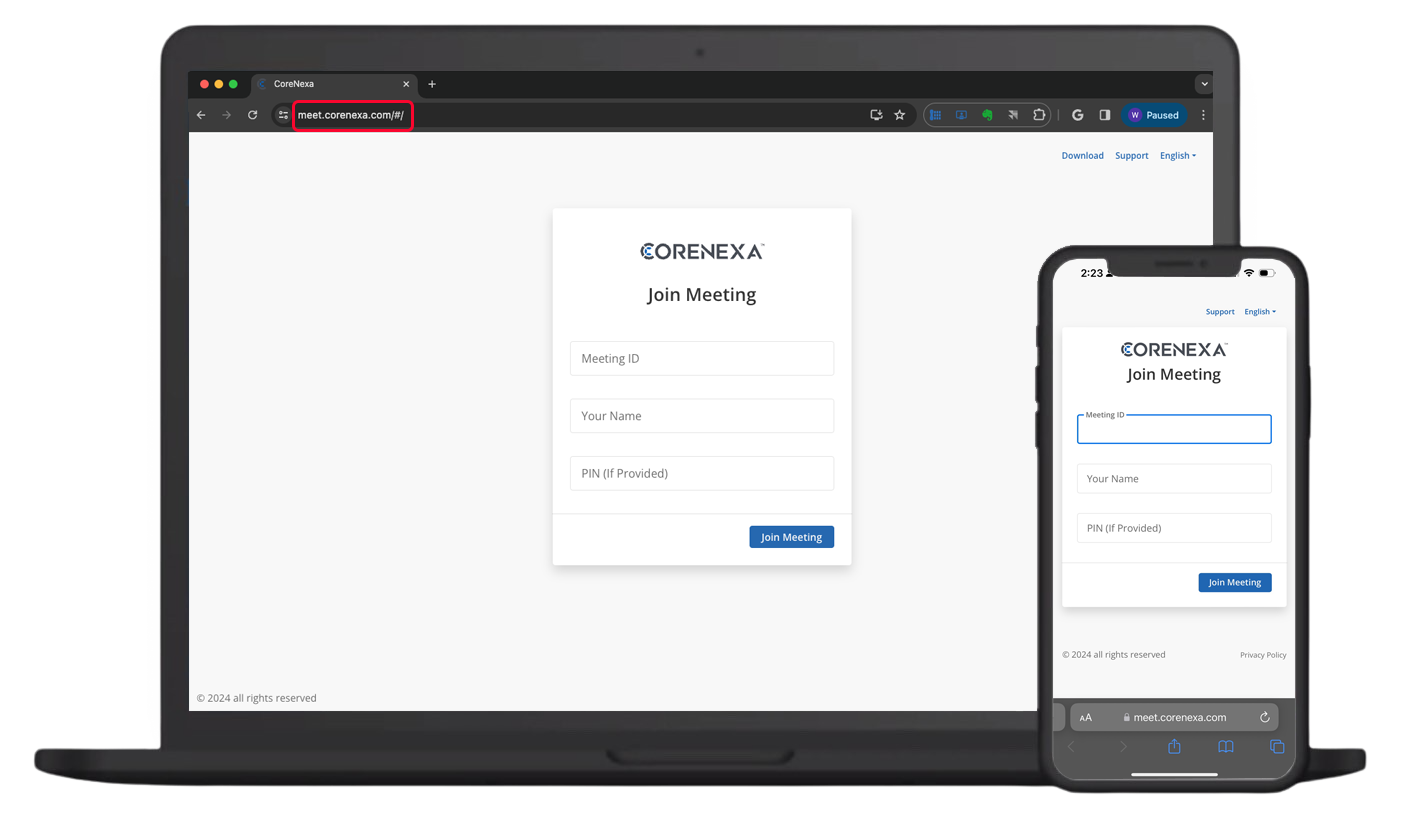
You're free to test it out Now. Give us a call and we'll provide you with a Meeting ID and Access PIN. It's that easy.
Multi-participant Meetings via Un-Scheduled/Scheduled Sessions and "Permanent” Rooms
Multi-participant video meetings (up to 100) and screen sharing is available via always-on "Rooms" or immediate/scheduled "Meetings." both accessible via CoreNexa's user interface. Rooms can be assigned to individuals or groups and are always available for a meeting, much like physical meeting rooms. Immediate and Scheduled meetings can be set up by any user with scheduled meetings automatically added to either Google Workspace or Microsoft 365 calendars along with the ability to add participants with their respective calendar invites. Both private 1 to 1 and multi-participant meetings (Room or Immediate/Scheduled) can be recorded.
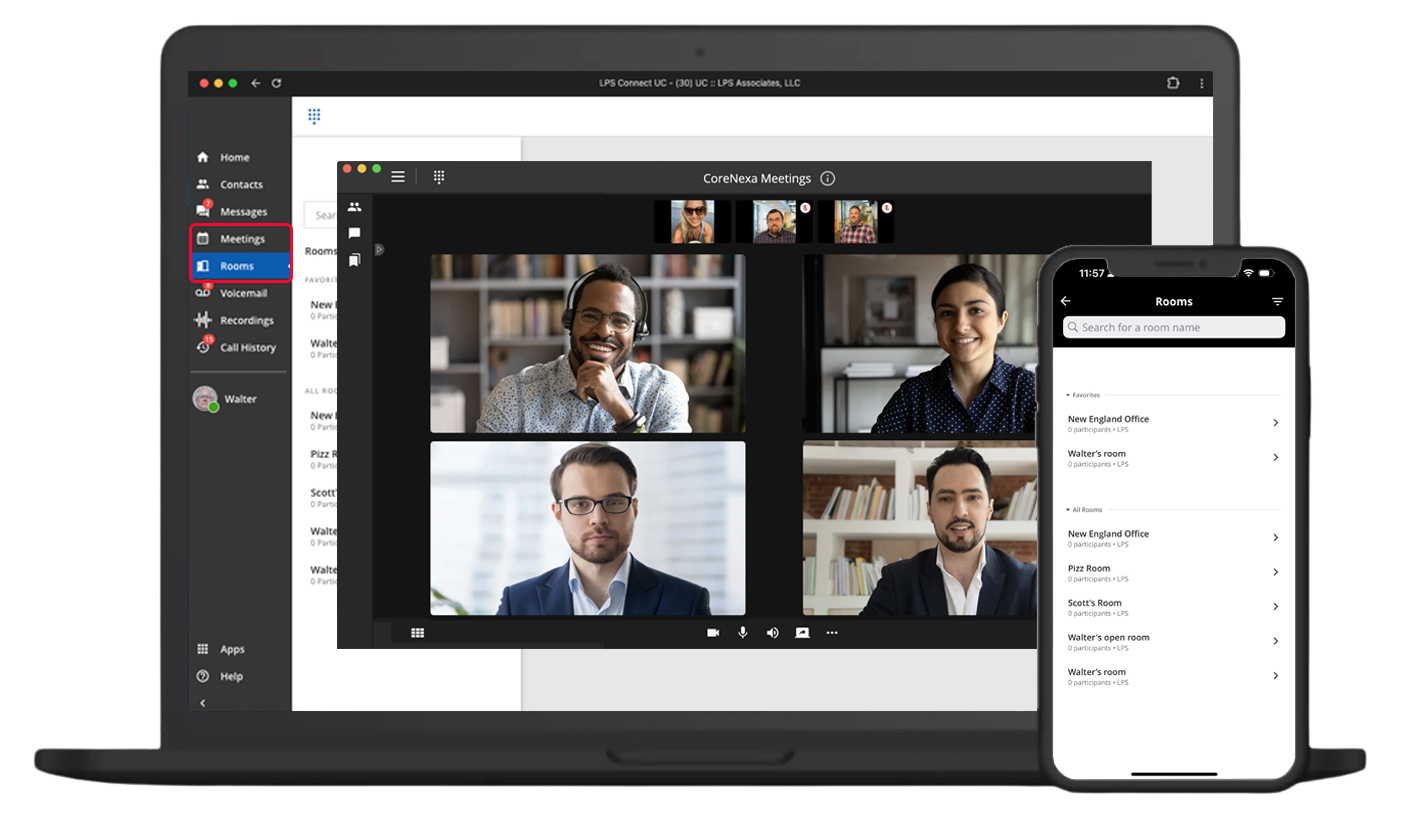
For "Rooms," the permanent "Meeting ID" and "Moderator Key or Access PIN" are all that are required to start a meeting at any time. Starting a meeting is as easy as opening a browser, entering the "meet.corenexa.com" URL, your name, and Moderator Key or Access PIN.
Form Factors
There are many ways that CoreNexa can be used to support an application or a specific environment, ranging from a mobile device, laptop, or Chromebook tablet to an 85" display in a meeting room or projector in an auditorium. This flexibility ensures that the right device and environment is available to productively hold a meeting.
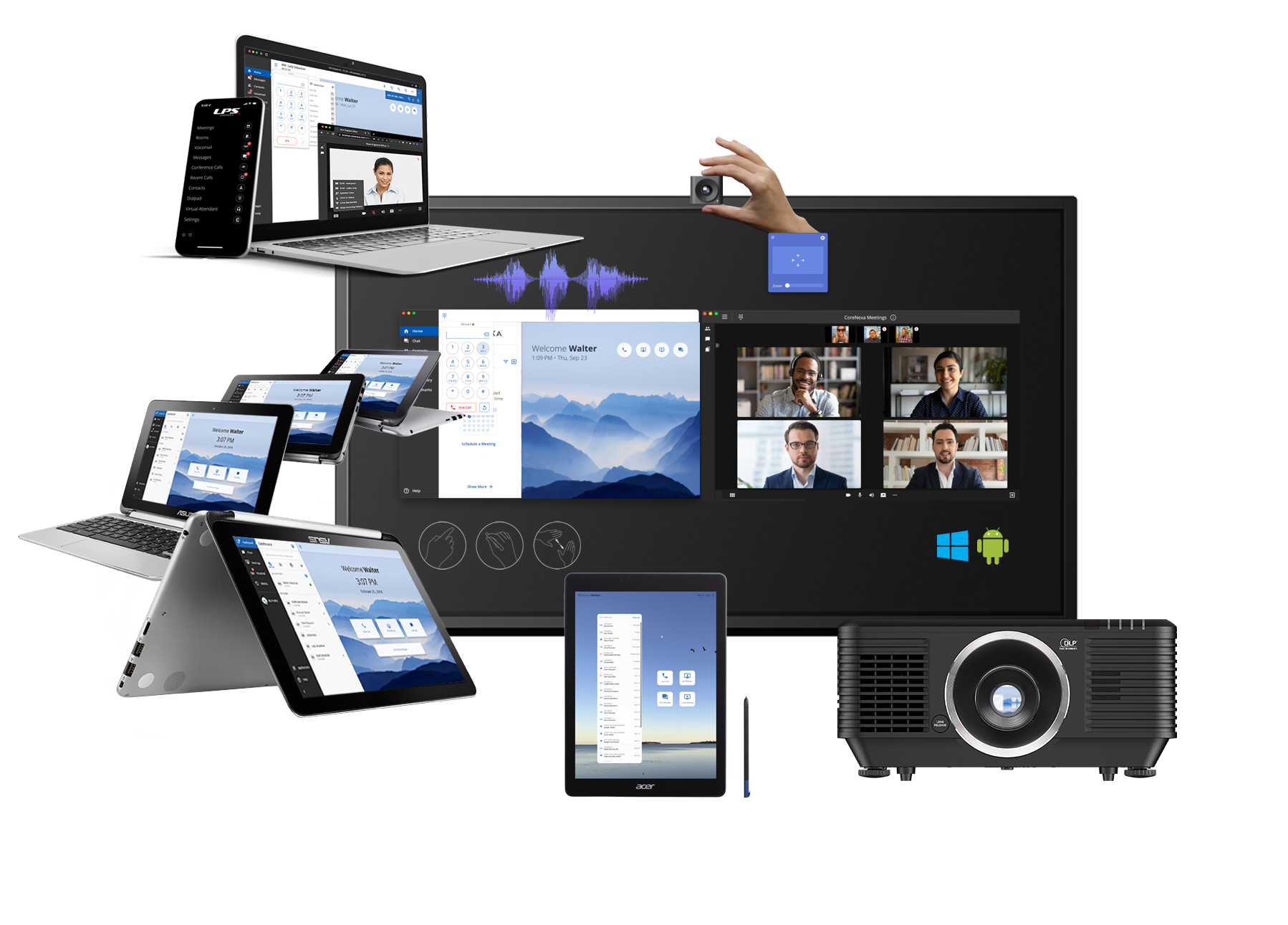
For the Meeting Room - Room Videoconferencing Services, Systems and Integrated AV
In addition to CoreNexa UCaaS with video conferencing, LPS is also an authorized partner of Zoom. We offer both licenses and meeting room devices from Poly, Yealink, and Lifesize that make it easier for teams to meet and collaborate, both in-office and with remote participants, . The devices provide high-quality video and audio conferencing and make it easier for remote participants to interact with everyone in the physical meeting room.
Equipment is available for Microsoft Teams, Zoom, Google Meet, and Cisco WebEx via their native services and interfaces. The equipment can also be used in device mode to connect a laptop or PC that is running almost all other services. In this case, the laptop or PC is using the resources - camera, mic, and speakers of the room system.
The following are devices offered by Yealink and Poly. The device on the left is the Yealink MeetingBoard running in Zoom Rooms mode. The device on the right is a Poly X70 meeting bar running in Teams Rooms mode.
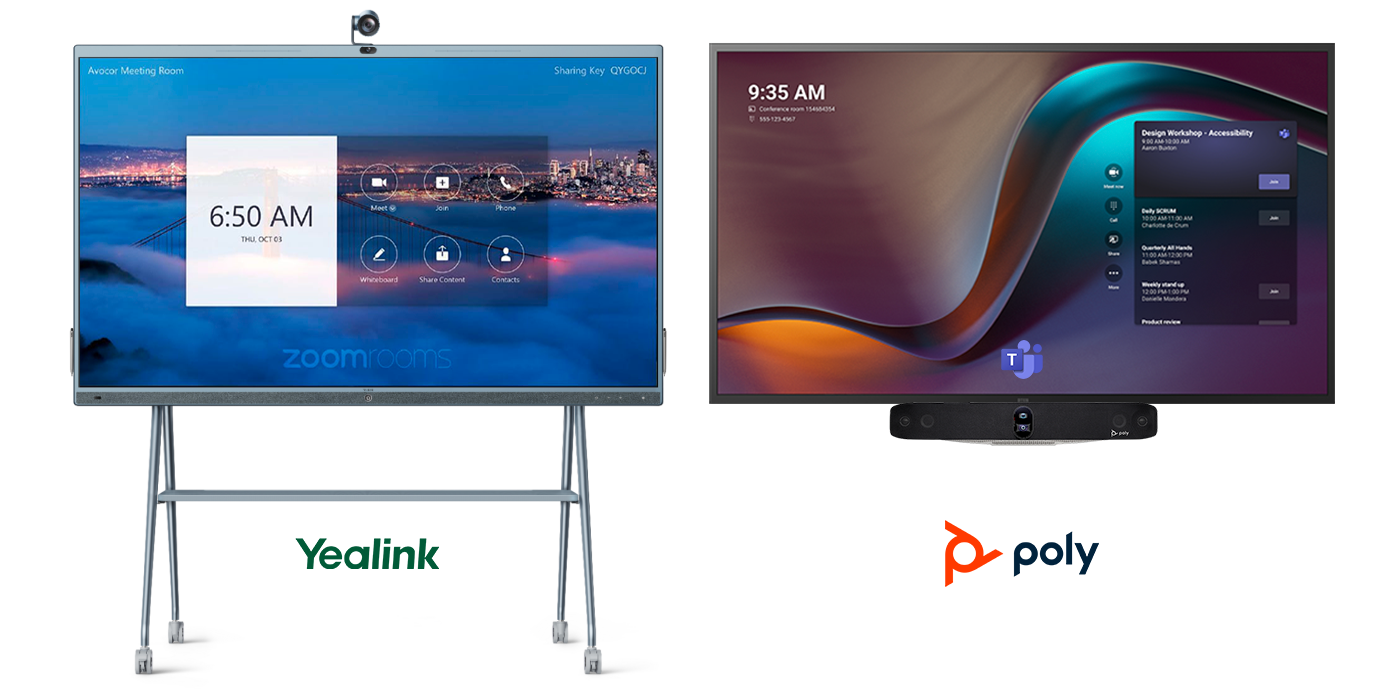
The Finished Result
The following is a meeting room designed by LPS and outfitted with Yealink devices for Audio and Video Conferencing using Zoom as the meeting service. All components are integrated with the room and designed to support it's visual and acoustic characteristics.
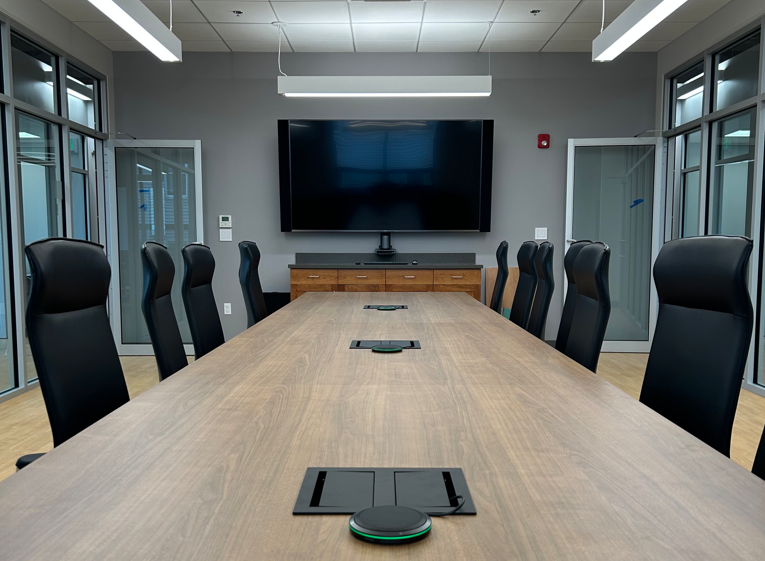
The following auditorium was outfitted with microphones, speakers, projector, and a LifeSize videoconferencing system to support the video and audio characteristics of the space.
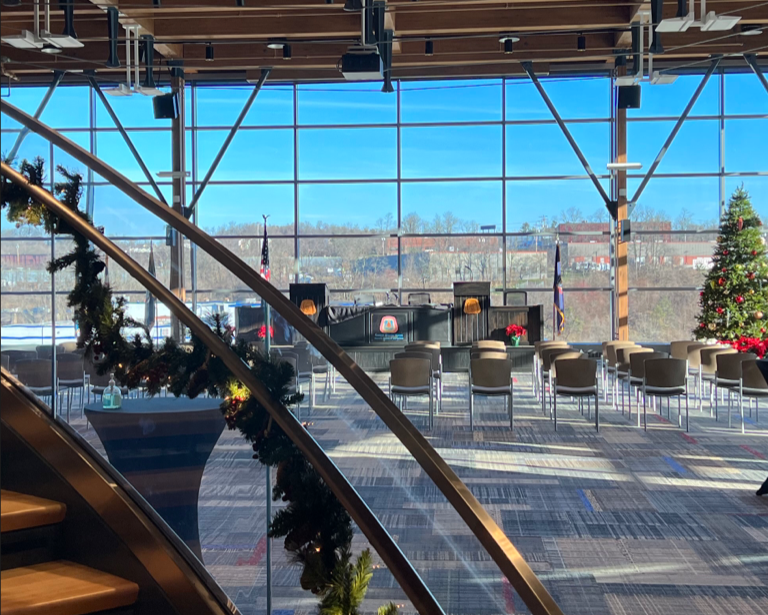
Please look out for a future post on meeting room devices offered by LPS.
In the meantime, if you have any questions regarding this post or video conferencing in general, please do not hesitate to reach out to us.
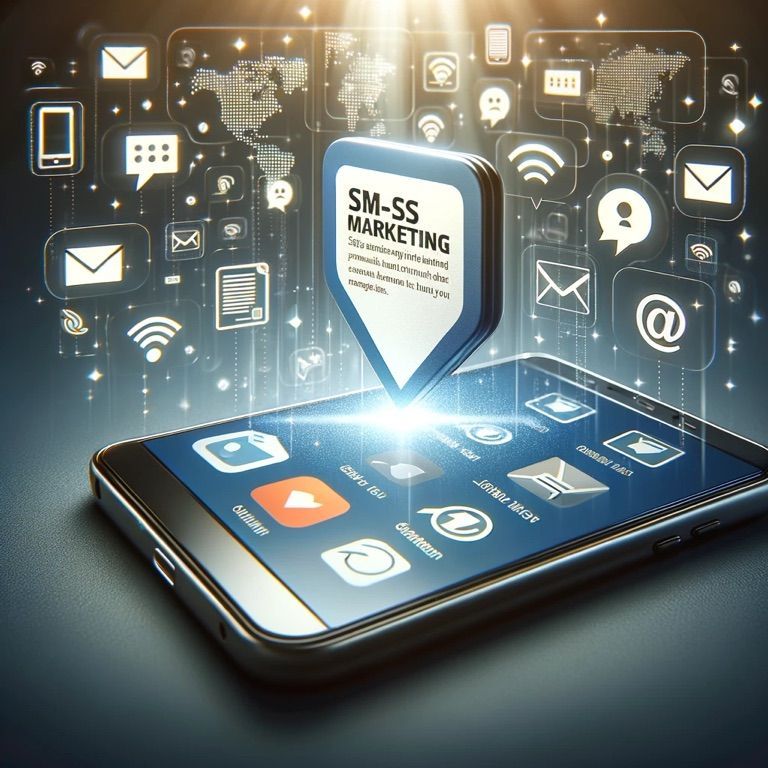


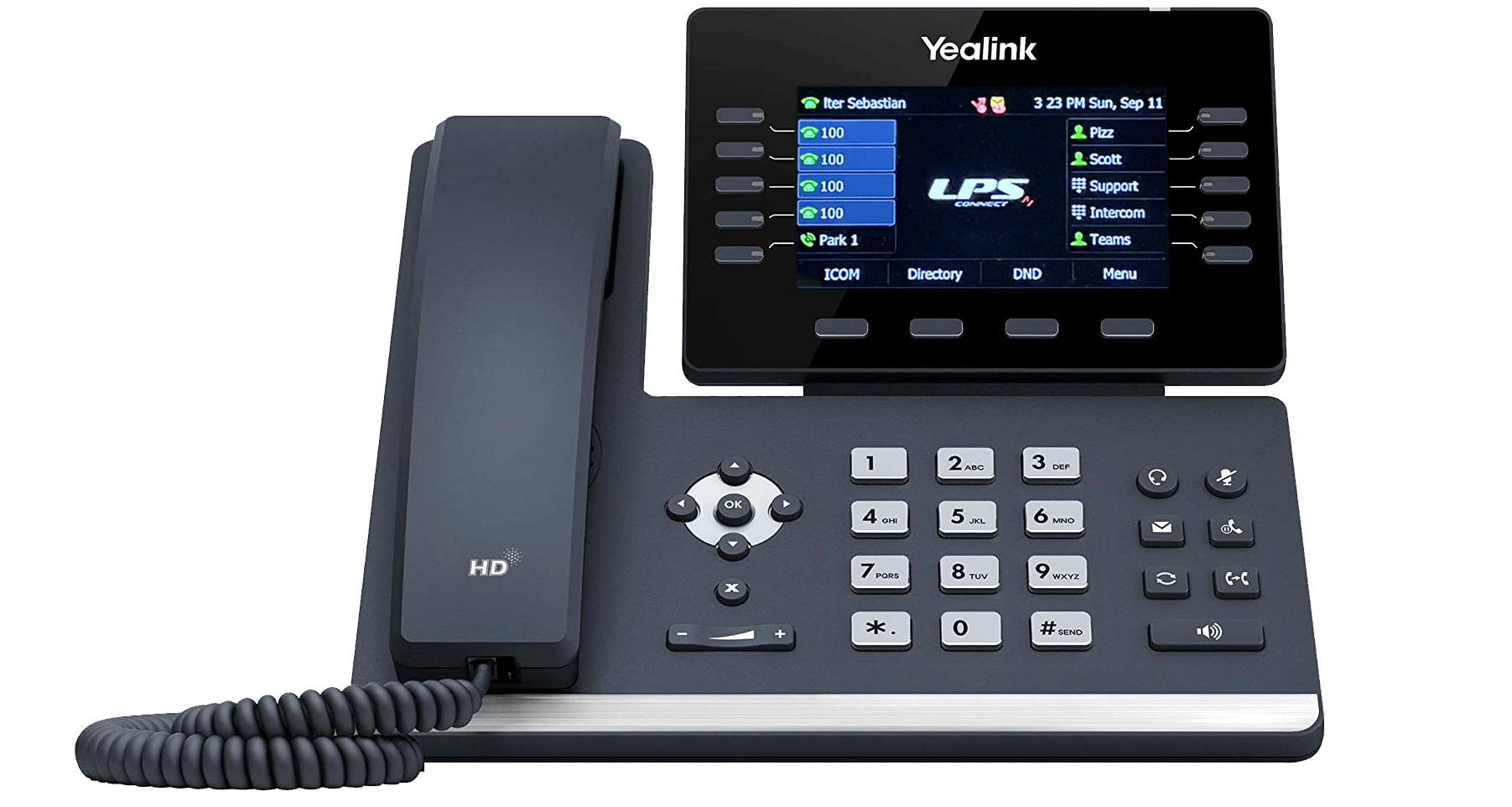
Call us at (800) 856-9610
For general inquires:
For customer service:
For sales:
New England
LPS Associates, LLC
175 Holmes Road North Eastham, MA 02651
Mid Atlantic
LPS Associates, LLC
3441 Germantown Pike Collegeville, PA 19426
Mailing Address
LPS Associates, LLC
716 Dekalb Pike Suite #123 Blue Bell, PA 19422
All Rights Reserved | LPS Associates

